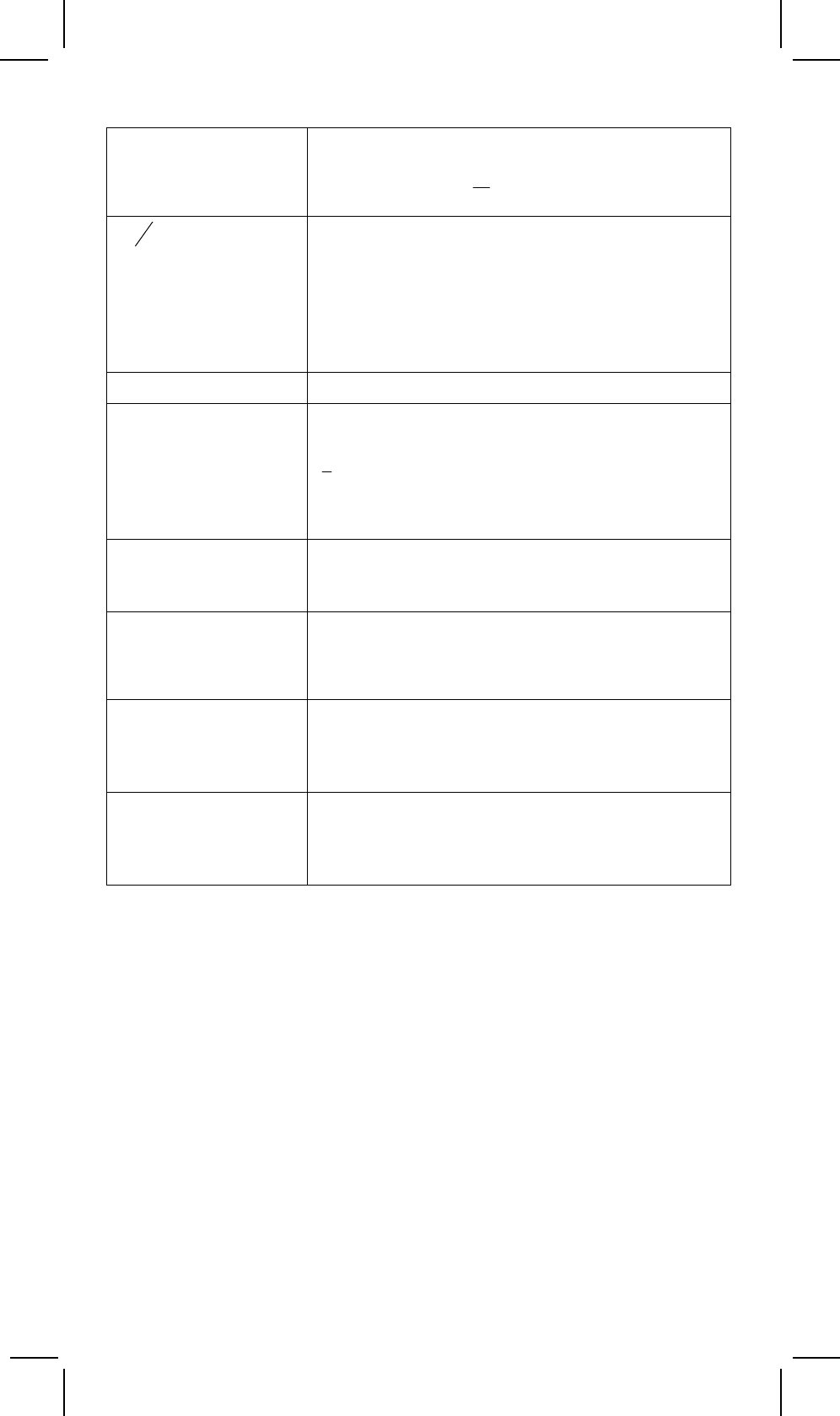
SR-260N_English_090324.rtf SIZE: 135x75mm / SCALE 2:1 / 2009/3/24
E7
x
<
0 : y = 2n+1, I/n, n is an integer. (n ≠ 0)
but –1 x 10
100
<
y
1
log | x | <100
c
b
a
Input
:Total of integer, numerator and
denominator must be within 10 digits
(includes division marks)
Result:Result displayed as fraction for
integer when integer, numerator and
denominator are less than 1 x 10
10
nPr, nCr
0
≤r≤n, n≤9999999999, n, r are integers.
STAT
│x│<1x10
50
,│Σx│<1 x 10
100
0
≤ │Σx
2
│<1 x 10
100
, n, r are integers
:n≠0,S:n>1,σ:n>0
Range = 1 ~ r, 1
≤ n ≤ r, 80 ≤ r ≤ 20400
ÆDEC
0 ≤ x ≤ 9999999999 (for zero or positive)
– 9999999999 ≤ x ≤ – 1 (for negative)
ÆBIN
0 ≤ x ≤ 0111111111 (for zero, positive)
1000000000
≤ x ≤ 1111111111
(for negative)
ÆOCT
0
≤ x ≤ 3777777777 (for zero or positive)
4000000000 ≤ x ≤ 7777777777
(for negative)
ÆHEX
0
≤ x ≤ 2540BE3FF( for zero or positive)
FDABF41C01
≤ x ≤ FFFFFFFFFF
(for negative)
Overflow / Error conditions
A symbol “ E “ are indicated on the display when any of the following
conditions occur and further calculation becomes impossible. Just
press [ ON/C ] to release those overflow or error indicator and the
subsequent calculation can then be performed.
1) When function calculations are performed with a number exceeding
the input range.
2) When a number is divided by 0.
3) When the [ ( ] key is used more than 15 times in a single
expression.
4) When a result (whether intermediate or final) or accumulated total
in memory exceeds the limit. (
±9.999999999 x 10
99
)
5) When more than six pending operations.
